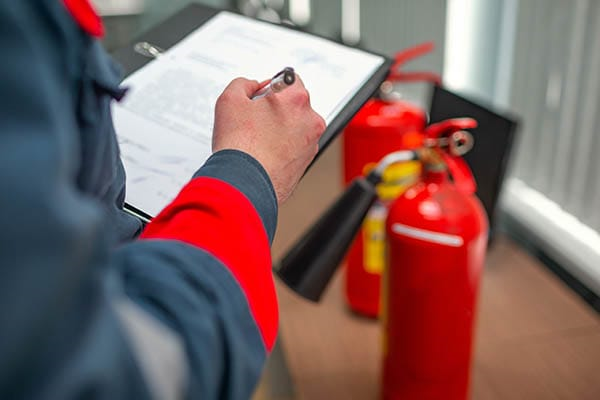
Heat detectors represent one of the most critical yet misunderstood components in modern fire safety systems, yet mounting evidence suggests that widespread misconceptions about their operational capabilities are creating dangerous protection gaps that could prove fatal. The assumption that any fire detection system will suffice has masked a troubling reality: many buildings rely on thermal detection technology that may not respond quickly enough when seconds matter most.
The Growing Divide Between Expectation and Reality
The global heat detection market tells a story of impressive growth—from USD 32.5 billion in 2024 to a projected USD 53.9 billion by 2031, representing a compound annual growth rate of 7.5%. Yet these figures obscure a more complex narrative about the technology’s limitations and the critical decisions that building owners and safety professionals face every day.
Fixed temperature thermal detectors, which activate when surrounding temperatures exceed predetermined thresholds, have emerged as the fastest-growing segment within the market. Their straightforward operation and reliable performance have made them increasingly popular in various environments, particularly where stable temperature thresholds can effectively signal fire hazards. However, this reliability comes with a significant caveat that many users fail to fully appreciate.
Singapore’s Sobering Assessment
Singapore’s approach to fire safety regulation provides revealing insights into how authorities view different detection technologies. The Singapore Civil Defence Force (SCDF) has made an unambiguous statement: “A smoke detector is more effective in providing early warning of fire compared to a heat detector. It is therefore recommended for the primary protection of homes.”
This assessment reflects a fundamental understanding that thermal detection, whilst valuable in specific applications, cannot match the early warning capabilities of smoke detection systems. The regulatory framework adds complexity: buildings of two or more storeys must be equipped with “both an automatic fire alarm system, such as a smoke or heat detector system and a manual fire alarm system, regardless of the floor area per storey.”
The Commercial Sector’s Dangerous Complacency

The commercial sector accounts for the largest share of thermal detector demand, driven by stringent fire safety regulations designed to protect employees, customers, and property. Yet this apparent compliance with regulations may be creating a false sense of security about actual protection levels.
Several factors contribute to this concerning dynamic:
- Regulatory minimum compliance often becomes the de facto standard, even when enhanced protection would be more appropriate
- Cost considerations frequently drive decisions towards less expensive thermal detection systems without adequate consideration of performance trade-offs
- Installation complexity can favour simpler thermal systems over more sophisticated but potentially more effective alternatives
- Maintenance requirements may influence long-term technology choices in ways that prioritise convenience over optimal safety outcomes
The Industrial Environment’s Unique Challenges
Industrial facilities present particularly complex challenges for thermal detection systems. High ambient temperatures, airflow patterns, and diverse fire risk profiles create conditions where conventional temperature-based detection may prove inadequate. Manufacturing environments, chemical plants, and large warehouses often feature conditions that can significantly delay thermal detector activation.
The consequences of delayed detection in industrial settings extend far beyond property damage. Worker safety, environmental protection, and business continuity all depend on rapid fire detection and response. Yet many facilities continue to rely on thermal detection systems that were designed for different environments and risk profiles.
The Technology Gap and Economic Reality
Whilst fibre optic thermal detection represents a significant advancement—with the global market expected to grow from USD 1.93 billion in 2023 to USD 3.22 billion by 2030—adoption remains inconsistent across sectors.
The apparent cost-effectiveness of basic thermal detection systems often masks their true economic impact. Delayed fire detection can result in significantly higher property damage, longer business interruption periods, and increased liability exposure. Initial savings from choosing less sophisticated detection technology may be dramatically offset by downstream costs.
The Path Forward: Reckoning with Reality
The thermal detection industry’s growth trajectory suggests continued commercial confidence. However, this growth must be understood within broader fire safety objectives rather than as validation of thermal detection’s universal appropriateness.
Building owners, safety professionals, and regulators must grapple with uncomfortable questions about the gap between current practices and optimal protection levels. Singapore’s frank assessment that smoke detectors provide superior early warning capabilities should serve as a wake-up call for those assuming equivalent protection from any fire detection system.
The path forward requires honest acknowledgement of thermal detection’s limitations alongside recognition of appropriate applications. Industrial environments with specific risk profiles and areas where smoke detection is impractical represent legitimate uses for thermal detection technology.
However, widespread reliance on thermal sensors as primary detection systems in environments where smoke detection would provide superior protection represents a troubling disconnect. This disconnect has real consequences for public safety and property protection.
The fire safety industry’s continued growth depends on addressing fundamental questions about technology selection and application. Until building owners, regulators, and safety professionals engage honestly with the limitations and appropriate uses of thermal detection technology, the current trajectory towards enhanced fire safety may prove illusory. The lives and property depending on these systems deserve an evidence-based understanding of capabilities and limitations, particularly when making the critical decision of selecting appropriate heat detectors for each specific application.




